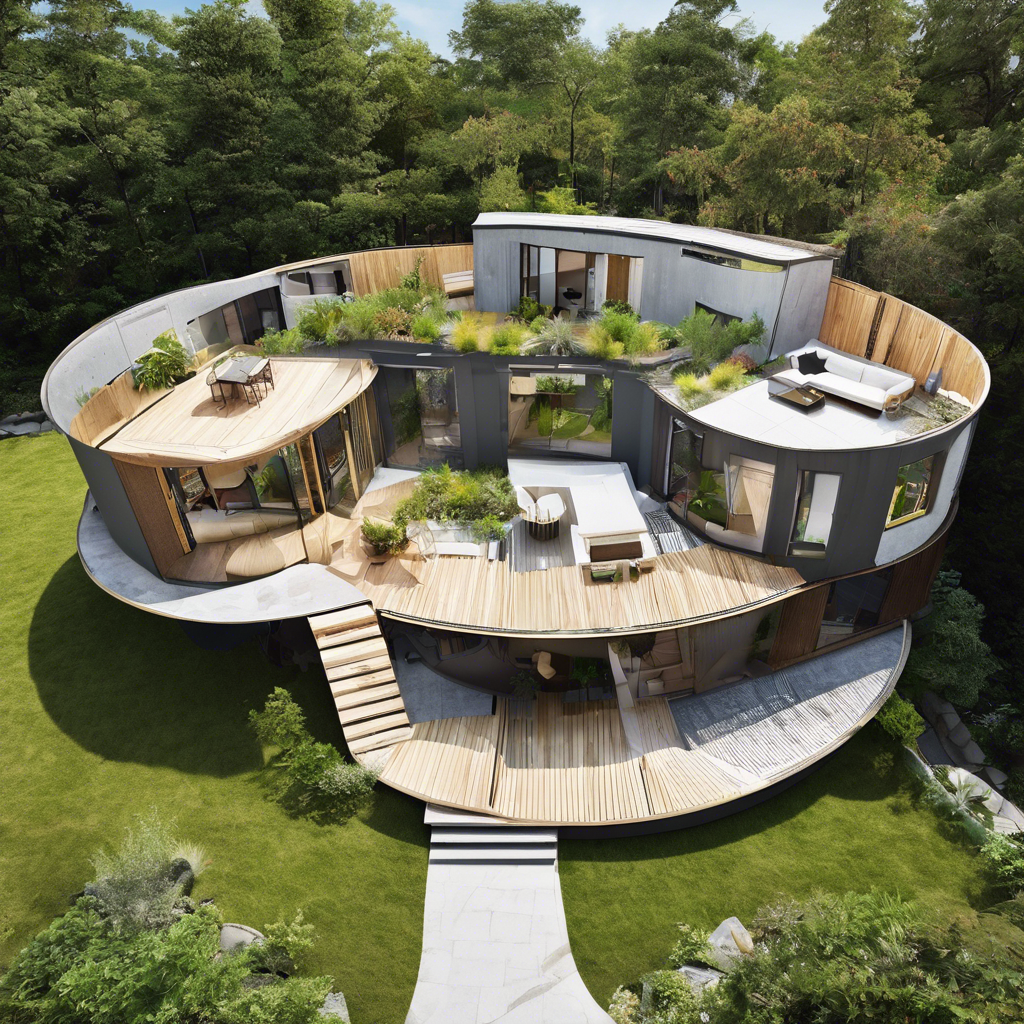
The Circular Home: Reducing Waste and Embracing Reuse
Welcome to the world of “circularity” in home design and decor – a growing trend that embraces sustainable practices to reduce waste and encourage resource reuse. From furniture to decor, designers and homeowners are finding innovative ways to minimize their environmental impact. This article will explore the benefits of circular design and provide practical tips on implementing recycling and reuse features into your home.
The current housing model of mass production, consumption, and disposal is leading us down a detrimental path. Circularity in home design offers an alternative that prioritizes the longevity of materials and products while promoting a more sustainable relationship between people and their environments.
There are three fundamental principles of circular home design: less, longer, and better. “Less” emphasizes simplifying and only including necessary items. “Longer” focuses on creating durable and lasting designs that extend product lifespan. Finally, “better” calls for improving the environmental footprint of products throughout their life cycle.
Designers and homeowners interested in embracing circularity have many practical ways to reduce waste and recycle resources. These include:
1. Embrace Second-Hand Furniture and Decor: Choosing pre-owned furniture and decor means avoiding the carbon emissions and resources associated with new production. Explore vintage stores, marketplaces, and auction websites for unique pieces with character.
2. Repurpose and Upcycle: Taking an old item and giving it a new life, perhaps as a different product, can result in unique pieces with character and sustainability credentials. Examples include using reclaimed wood to create a new shelving unit or turning empty bottles into decorative lamps.
3. Hire a Professional: For major renovations, enlist the help of a professional contractor or architect familiar with sustainable practices and materials. They can advise on eco-friendly solutions and ensure your home is energy-efficient.
4. Use Sustainable Materials: Choose furniture and decor materials sourced from sustainable suppliers and harvested responsibly. Natural materials such as bamboo, rattan, and organic textiles tend to have a lower environmental impact.
5. Consider Rental and Subscription Services: Renting or subscribing to furniture and home items, particularly for short-term purposes or when needing occasional use, can be more sustainable than buying and discarding.
6. Pass It On: When no longer needing certain items, pass them on to others who may use them instead of discarding them. This minimizes waste and gives the item a new lease on life.
7. Circular Maintenance: Adopt mindful maintenance practices, including cleaning and repairing damaged items instead of replacing them. A little care goes a long way in extending the lifespan of products.
8. Embrace Natural Decor: Utilize natural elements such as plants for decorating, as they can have a positive impact on mental health and create an on-trend biophilic atmosphere.
The shift towards circularity in home design is a positive step towards a more sustainable future. Embracing circular home design is beneficial for the environment, as well as providing unique and creative opportunities for designers and homeowners. By adopting circular practices in designing, decorating, and maintaining our homes, we can significantly reduce waste and ensure a more sustainable future for generations to come.